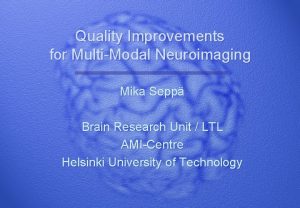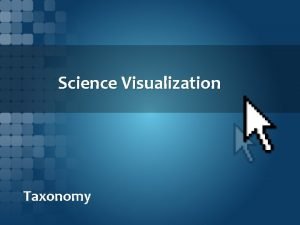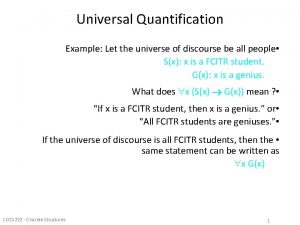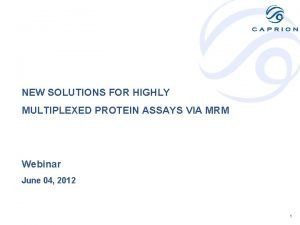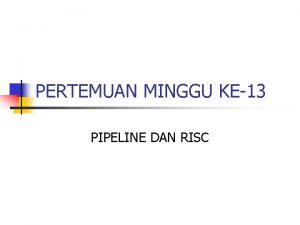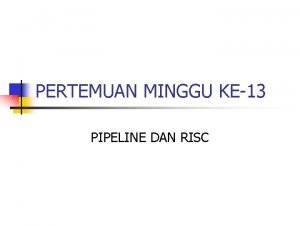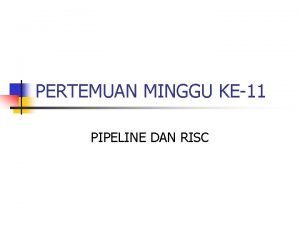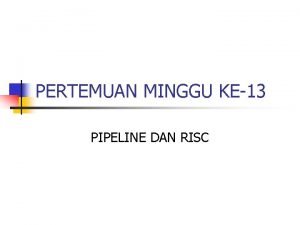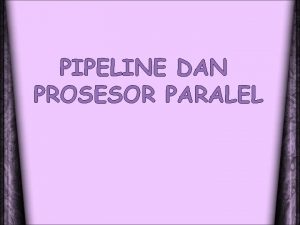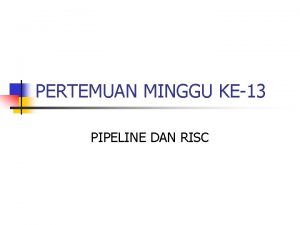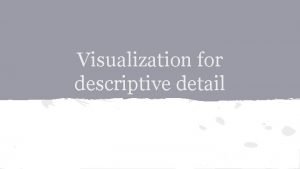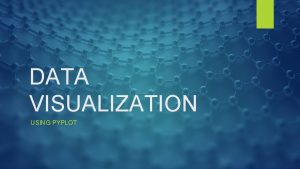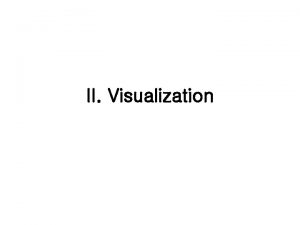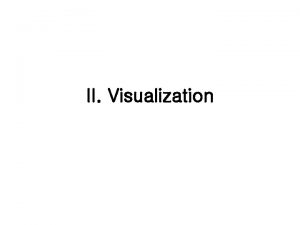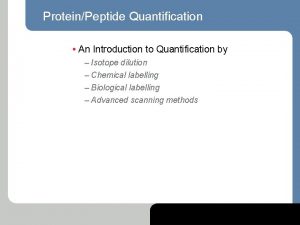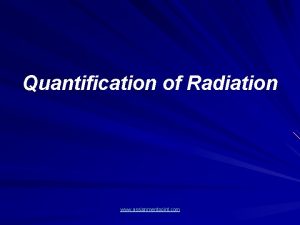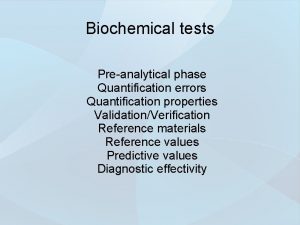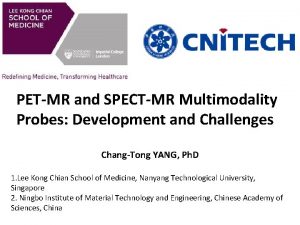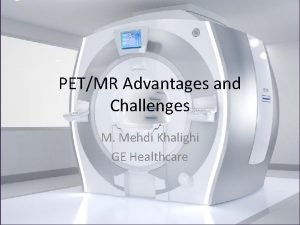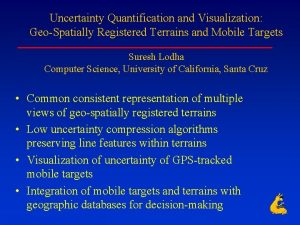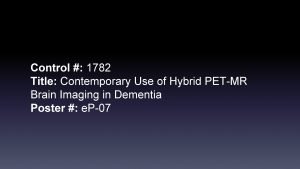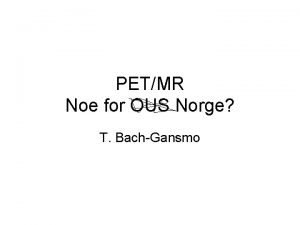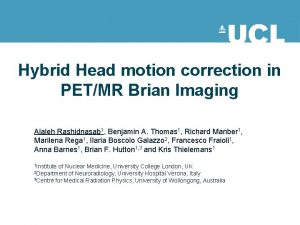Semiautomated pipeline for neuroimaging PETMR visualization and quantification






















- Slides: 22

Semi-automated pipeline for neuroimaging PET/MR visualization and quantification MICCAI Educational Challenge 2018 By Fabio Raman, University of Alabama at Birmingham Mentors: Jon Mc. Conathy, MD, Ph. D and Erik Roberson, MD, Ph. D

Quantification of PET/MR biomarkers requires several steps • Brain segmentation of volumetric MR image • Image registration of MR to PET • Extraction of volumes of interest (VOI) • Quantification of biomarkers

Quantification of PET/MR biomarkers requires several steps • Brain segmentation of volumetric MR image • Image registration of MR to PET • Extraction of volumes of interest (VOI) • Quantification of biomarkers

Quantification of PET/MR biomarkers requires several steps • Brain segmentation of volumetric MR image • Image registration of MR to PET • Extraction of volumes of interest (VOI) • Quantification of biomarkers

Quantification of PET/MR biomarkers requires several steps • Brain segmentation of volumetric MR image • Image registration of MR to PET • Extraction of volumes of interest (VOI) • Quantification of biomarkers

Why is it important to combine visualization with quantification? • Current FDA guidelines still use visual criteria to assess status of patients with various imaging biomarkers • Example: Alzheimer’s disease assessment using neuroimaging according to NIA-AA guidelines for Aβ plaques (A), tau tangles (T), and neurodegeneration (N) • : AT+ TN+ N– A+

Problems with current processing pipelines • None have been implemented into routine clinical workflow • • No FDA approval Computational intensive Time consuming No visualization • Issues with fully automated registration methods • Lack of visual control check to ensure accurate contour delineation across modalities • Lack of versatility • Not adaptable to different segmentation algorithms • Important for multicenter trials and longitudinal studies

Methods – Multimodal Brain Processing Pipeline (MMBP)

Methods – Multimodal Brain Processing Pipeline (MMBP)

Methods – Multimodal Brain Processing Pipeline (MMBP)

Methods – Multimodal Brain Processing Pipeline (MMBP)

Methods – Multimodal Brain Processing Pipeline (MMBP)

Methods – Multimodal Brain Processing Pipeline (MMBP)

Benefits of using supercomputing cluster • UAB Super Computer (High Performance Computing Cluster) Cheaha • 3120 CPU cores that provide over 120 TFLOP/s of combined computational performance. • 20 TB of memory

Parallel and distributed implementation • Every patient (1 volumetric MRI) was sent to 1 node in Cheaha Cluster • It took about 8 hours to segment 1 patient • ~200 patients were segmented in less than 12 h.

Benefits of using MIM • Easy, efficient to design workflows encompassing a wide of array of post-processing tools to automate analysis

Manual editing of contours and registration, if necessary, to ensure accuracy

Manual editing of contours and registration, if necessary, to ensure accuracy Contour editing tools

Manual editing of contours and registration, if necessary, to ensure accuracy Contour editing tools Outlined brain regions

Manual editing of contours and registration, if necessary, to ensure accuracy Contour editing tools Outlined brain regions Registration tools

No limits to customized analysis with ability to imbed Matlab extensions into workflow Extension has adjusted new CT image so that all values less than bone are replaced by air

Conclusions • Semi-automated pipelines PET/MR allows for streamlined neuroimaging analysis for both clinical and research use • Key features • Efficient and easy for physicians to use • Automatically segments VOIs with high accuracy and reproducibility • FDA-approved with visualization • Versatile • Implemented with wide array of segmentation algorithms, biomarkers, and diseases
 Neuroimaging
Neuroimaging Neuroimaging
Neuroimaging Linear pipeline processors in computer architecture
Linear pipeline processors in computer architecture Visualization pipeline
Visualization pipeline Vacuous quantification
Vacuous quantification Universe of discourse examples
Universe of discourse examples Highly multiplexed protein quantification
Highly multiplexed protein quantification Superscalar pipeline design
Superscalar pipeline design Kontinuitetshantering i praktiken
Kontinuitetshantering i praktiken Typiska novell drag
Typiska novell drag Tack för att ni lyssnade bild
Tack för att ni lyssnade bild Vad står k.r.å.k.a.n för
Vad står k.r.å.k.a.n för Shingelfrisyren
Shingelfrisyren En lathund för arbete med kontinuitetshantering
En lathund för arbete med kontinuitetshantering Särskild löneskatt för pensionskostnader
Särskild löneskatt för pensionskostnader Vilotidsbok
Vilotidsbok Anatomi organ reproduksi
Anatomi organ reproduksi Förklara densitet för barn
Förklara densitet för barn Datorkunskap för nybörjare
Datorkunskap för nybörjare Tack för att ni lyssnade bild
Tack för att ni lyssnade bild Debatt artikel mall
Debatt artikel mall Delegerande ledarskap
Delegerande ledarskap Nyckelkompetenser för livslångt lärande
Nyckelkompetenser för livslångt lärande

